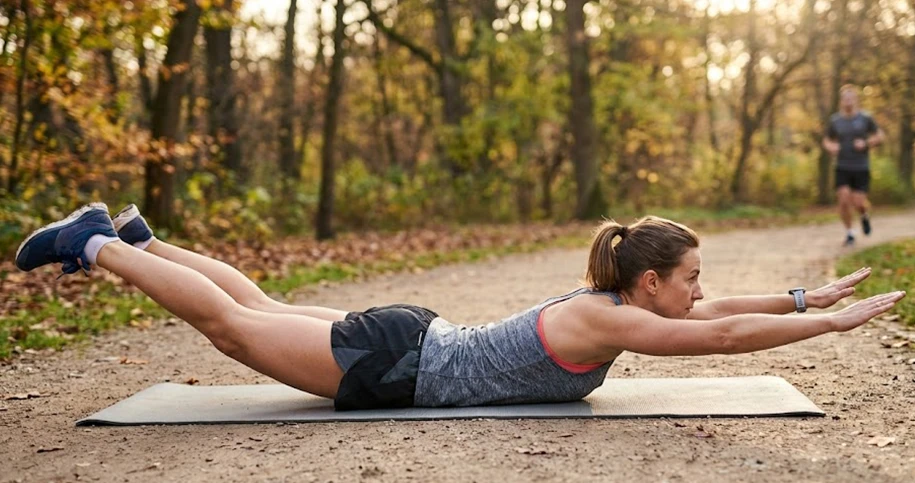Running the first half marathon isn’t just about following a paper training plan. So here are 10 of the things I wish I’d known about how to train for a half marathon as a beginner.
Running the first half marathon isn’t just about following a paper training plan.
There are pieces often not listed like hip strength or core strength or even how to work on your mindset to run farther than you ever imagined you could!
So here are 10 of the things I wish I’d known about how to train for a half marathon as a beginner.
Most of these lessons apply to running any new distance, but I found especially pertinent half marathon tips.
1. Set a date for your race
Setting the date makes your goal of running a half marathon more concrete and something you will be more motivated to be working towards.
With the attitude of “I’ll run it when I feel ready”, I promise, you’ll never feel ready. If there is a particular race you want to do, that is always helpful.
Sign up for it ASAP before you change your mind!
No specific race you’re interested in? Search for some around the date or month you want to reach your goal. Ask friends and others in your running community for suggestions.
2. Simulate Race Conditions In Training
To a large degree, simulate race conditions as much as possible during training.
Don’t go out and race a marathon daily, but every facet of the race needs to be practiced.
Includes tempo running toward the end of long runs, allowing your body to maintain your half-marathon race pace beyond 20 miles.
We should also practice water stops and drinking large volumes of water and/or carbohydrate solutions during training.
If you are training for a race such as Boston, then some downhill running needs to be incorporated.
Try to train at the time of the day the race starts and in the predicted weather conditions as much as possible.
Do a “dress rehearsal” several weeks prior to the event in a race or long run. This is the time to try out all racing clothing, shoes, socks, and pre-race meals.
You want to do this far enough in advance to allow for changes to take place – and your blisters to heal.
3. Slow Down
Push yourself, it’s race day after all, but when you find yourself hitting paces you never saw in training take a breath and reel it back in.
It’s easy for even experienced runners to get swept up in the excitement of the thousands of runners, the cheers and the idea that race day is finally here.
But, you have no idea what their training looked like, so don’t let any ego pressure or adrenaline push you to keep up.
Tips: It’s way more fun to be passing people at the end, than praying it was over.
4. Practice Good Nutrition
Good nutrition planning is not just for elite runners; you can’t wing it on race day. It’s about being well hydrated in the days leading up to the race, getting your electrolytes balanced and learning what fuel works for you during the run.
Just because the packet says 1 gel every 30-45 minutes doesn’t mean you need that… it also could be why you’re dealing with runners trots.
You should always practice the race fueling strategy in your sessions before the race!
Get the exact gel count to power your performance using our energy gels calculator.
5. Wear Fitted Running Shoes
Get fitted for good running shoes.
The one’s you bought from the department store may have worked fine in the past, but they aren’t suited for the increased mileage you’ll be covering.
6. Check Your Ego
Check it at the door because you’ll find yourself getting passed by people older, fitter, taller, shorter, thinner, heavier, with strollers and none of it matters.
What matters is you showed up and crossing that finish line is automatic PR.
If it’s not the time you want, the great news is your next race will be another PR!
7. Prep for Chaffing and Blisters
On race day you may suddenly find yourself chaffing in places you didn’t even know existed.
Put Body Glide on every conceivable inch of the body, not just select spots like your thighs, but on race day get in between every toe, under every arm, and even around your waistband. It’s worth it.
8. Run Solo
Practice running solo at least once a week during training.
If you always run with someone and find yourself solo on race day it can immediately throw off your entire day. Know you can rely on yourself.
9. Learn About Recovery
Spend time learning about recovery.
Compression pants, ice baths, sports nutrition, all of these things ensure that during training you can continue putting in the miles and after the race you can resume training without too many days of walking down stairs sideways.
Whether it was the best or worst experience of your life there is often a desire to get right back to training, but your body won’t be ready right away.
Those who do jump back in often find themselves injured within a few months. A few extra easy weeks are worth avoiding months of frustration.
Learn how to recover like a pro runner here.
10. Stick to Your Plan
Finally, it’s important to know that every runner you meet will have an opinion about how you should train, what to wear, what to think; it’s great to listen to all of the advice, but after that you need to decide what fits your personality and then stick to a plan!
As you can see, there’s a lot that goes into successful half marathon training. Put my top tips into practice and you’ll be race ready come the big day!
Conclusion
Running your first half marathon goes beyond a training plan. Build strength, stay positive, and practice good nutrition. Set a race date, simulate race conditions, and prepare for challenges. Stick to your plan and trust your training. With these tips, you'll confidently cross the finish line!




.webp)
.webp)
.webp)